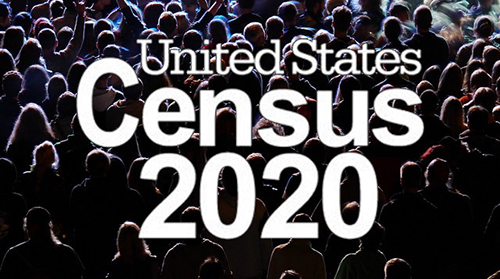
We Need All Hands on Deck for Census 2020 for a Full and Accurate Count
As we gear up for the 2020 Census, we need to keep our eyes on the prize about encouraging full participation so that our communities receive the resources that they need to build new schools, roads, and other public facilities. This is especially important in the San Joaquin Valley, where rural pockets and communities of color have had historically lower participation rates in responding to the census questionnaire.
Census data is used by all levels of the government to make decisions about the allocation of resources. The government distributes more than $675 billion per year in federal funds based on census data. In addition, congressional and state legislative districts are redrawn after the census. How districts are drawn influences how political power is distributed.
Professor Manuel Pastor, a sociologist at the University of Southern California, recently said that the San Joaquin Valley is becoming the “new California,” in an event hosted by the Sierra Health Foundation in Fresno. The population for residents under the age of five in our region is substantial and projected to grow, while in other regions of the state the population for this age group is expected to stay about the same or decline. Between 2010-2040, the growth rate for the population five and under in the San Joaquin Valley is projected to grow 10.1 percent, whereas in Southern California it is projected to decline 15.6 percent, according to the California Department of Finance. Additionally, the Valley’s age five and under group of the population is more Latino than the five and under population for the rest of the state.
While our population is young and diverse, residents of the San Joaquin Valley are less secure economically than other Californians. The metropolitan areas in California’s Central Valley (Fresno, Modesto and Bakersfield-Delano) are among the top five U.S. regions with the highest percentage of residents living below the poverty line, according to census data from 2012. Our region has also experienced higher unemployment than the rest of the state. Valley residents experience stressful economic conditions. The San Joaquin Valley economy is not as diverse and is subject to the boom and bust of multi-billion dollar agribusiness. This is why investing in our youth, our schools, and our workforce is important.
We need to come together and stand up and be counted. We need to educate people in the months leading up to the census about how they can respond to the census accurately and efficiently. In addition, we need to reach out to our immigrant communities and inform them that there will not be a citizenship question on the 2020 census even though the Trump administration attempted to include it. We will inform people that data submitted to the census is legally required to be confidential and used only for statistical purposes, not law enforcement or immigration enforcement.
To launch the local community based census outreach efforts, a press conference will be held on Wednesday, October 30, 2019, at the MLK Community Center at 1000 S. Owens St. in Bakersfield. Local organizations such as the Dolores Huerta Foundation and Faith in the Valley, the Kern Complete Count Committee and The Center at Sierra Health Foundation, will discuss the launch of community canvassing efforts to increase participation in the census and educate community members about why full participation is important.
The wellbeing of the Valley depends on a strong census participation rate, and we are going to focus on achieving a full and complete count.
Reyna Olaguez is the Executive Director of Kern Sol News, a youth-led community news website aimed at shining a light on health disparities that exist in communities across Kern. She is also a member of the Kern Complete Count Committee.